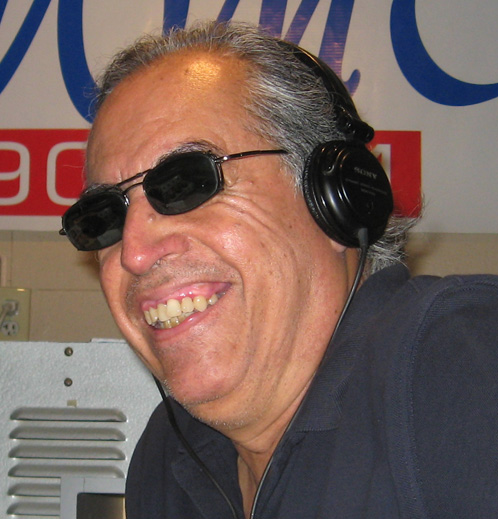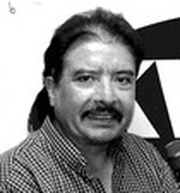 Through the vision of Santos Garza and spirited Parents, San Felipe Independent School District was approved in 1929 and three schools were built. There were two elementary schools (1st-6th grade}. School No.1 was known as Escuela Amarilla as it was always painted Yellow. School No.2 was called Calaveras (Skulls) and it was near the cemetery. Then there was San Felipe High School, one side was Junior High (7th-8th grade) and the other side was High School (9th to 12th grade). There was no pre-school or kindergarten. Children started school at age 6. As most young children lived the School No. 1 area, the main building was two stories high to meet the demand. Stairs went up on both east and west walls. The second story had a fire scape side on the west side. Playgrounds were dirt as grass was non-existing. On the corner of Jones and Canal streets, there was a small building, the office of the Tax Collector. My father, Victor Vazquez, held that office for years until the family left to California in 1946. One thing that San Felipe schools were proud of was that their curriculum was all academic. There were no elective or technical courses. You either completed and passed all subjects required by the State of Texas School Board or you would not get your Diploma. The school did not have school buses picking up students nor a cafeteria. All students walked to school, walked home to eat lunch and returned to school for afternoon classes. The San Felipe Barrio had only two streets paved, Canal from San Felipe Creek and up Garza Street to the High School. The other was the old State Highway 277 toward Eagle Pass. As there were few cars, students walked as well as citizens. Homes did not have garages. Streets had no sidewalks. There were to sewer lines, Streets were 99% dirt and with pot holes. There were no storm drains so when it rained, potholes would fill with water and made walking rough trying the miss them and prevent ruining your shoes, The City of Del Rio finally started a bus line in around late 1945. They charged a nickel to ride. By that time, we were so used to walking we continued to do so. Our teachers were monolingual and bilingual. As all children were raised in the Spanish Language, we were taught to learn English and ordered to speak only English at the school and in the playgrounds. But as soon as teachers were out of range, we spoke our native language. Bilingual teachers taught first grade only. After that, students were taught by teachers. Wooden paddles were always at the teachers reach and they used them. As everybody new everybody, including teachers and parents, if you misbehaved badly a school, you would be disciplined and again at home. Curriculum included four years on English, four years of History, three years of Mathematics, two years of Spanish, two years of Science as I remember. Because of our education, I was credited 9 units when I enrolled in college. Since there were computers or calculators, all school work had to be done or solved by hand. As I did not have athletic ability, I was a member of the High School Band for 6 years. Our School fielded football and basketball teams. Equipment was limited as the school had limited resources but scheduled nearby teams to compete in sports. During World War II, classes at San Felipe dwindled as 17 and 18-year-old students were being drafted. By 1946, the graduating class was one of the smallest at 18 graduates. As the GI’s returning from the war and the GI Bill available, many took advantage proceeding to college and returning to teach at San Felipe. This set an example for other graduates to attend colleges and universities. While many following the education field, others attended excelled in medicine, law, engineering and other professional fields. This accomplishment changed the character of the school where graduates seeking higher education were now reachable while in the past it was hard to accomplish. San Felipe schools pride in their football team, the San Felipe High School Mustangs. The highlight of this sport was when in 1941, the Mustangs beat a heavily favored Del Rio High School Wildcats at Cowboy Field 27-6. Mustang pride imbedded this accomplishment in the minds of the students who remember the pep rallies with pep squads, the band and enthusiastic bond fires. During World War II, as we could not attend games out of town, Red & White Store on Cantu Street, owned by the Zertuche brothers, helped our neighborhood. They would have butcher paper on the window facing Cantu and had a person phone scores after each quarter that was posted outside. At times. the street was closed because of the interest of the students in the football game blocked the street. It was a Barrio tradition. The BARRIO spirit! After World War II, the exodus of families from San Felipe to California looking for a better education and a better life. While many moved to Los Angeles, the majority settled in the Santa Clara Valley. Jobs were readily available as was higher education with colleges and universities. In past years, it was hard to get a Mexican-American elected to the City Council until the late 1950 when Dr. Alfredo Gutierrez was elected. He went on to become Mayor. Since, several have been elected to the Council and Mayoral offices. As everybody remembers, San Felipe School were segregated with only Mexican-American Students from the Barrio. It was not desegregated until the Civil Rights Movement in the early 1960’s. In the early 1970’s, the school was closed and consolidated with Del Rio High School to form the San Felipe-Del Rio Consolidated School District. This action did not break the Spirit of San Felipe Mustangs, it strengthened it. The ex-students of San Felipe started having Ex-Student Reunions in California in 1963 that are still being celebrated in Del Rio in July every other year. It’s the spirit that never dies. The little school that could has pride for the students who returned as Medical Doctors, Lawyers, Architects, Teachers, Nurses and other professional fields to help the citizens of Del Rio. Mario R. Vazquez, Author’ “Mario From The Barrio” |
�
KWMC
|

 RSS Feed
RSS Feed



